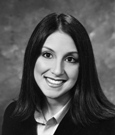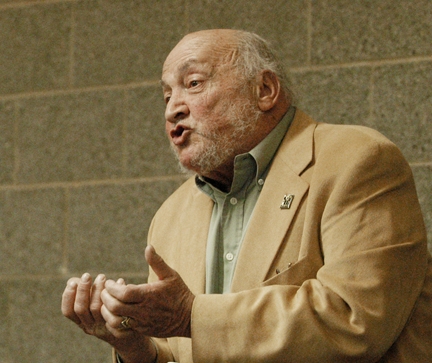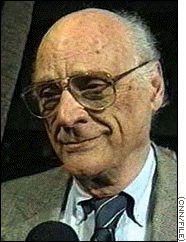From the NY Times
State Offers Details Online to Help Determine if Food Is Truly Kosher
By JOSEPH P. FRIED
Four and a half years ago, a federal judge declared unconstitutional New York State inspection laws that intended to ensure that kosher-labeled food was kosher. Now the state has begun carrying out a new law that gives consumers information online about the rabbinical authorities that certify products as kosher.
Under the old laws, state inspectors visited stores and sometimes production plants to determine if kosher-labeled products sold or made at the sites were produced under kosher standards. Now, in place of the inspections, the state is creating an Internet database, which went online Thursday. The database provides information to help consumers find out a product’s kosher certification.
The new law, enacted in July, requires producers, distributors and retailers of food sold as kosher in the state to submit information – including the identities of the organizations or individuals certifying their products as kosher – for inclusion on the Internet registry. The statute also requires that many of those who do the certifying provide their qualifications, including their education, training and experience. The Internet registry is available at www.agmkt.state.ny.us/kosher.
The new law is intended to avoid the legal pitfalls of the earlier laws, which originated in the late 19th century and were declared unconstitutional in 2000 by Judge Nina Gershon of Federal District Court in Brooklyn. She ruled that those laws had fostered “excessive entanglement” between religion and the state by authorizing kosher to be defined as prepared “in accordance with Hebrew Orthodox religious requirements.” She said this standard impermissibly required the state “to rely on religious authority and interpretation” for enforcement.
Her ruling, upheld on appeal, came after a Long Island kosher meat business had been cited for violations under the old laws. The owners of the business, Commack Self-Service Kosher Meats, argued that the statutes had infringed on the rights of Jews who were not Orthodox and who often had different standards of kosher.
Commack’s owners were ordered to pay fines after inspectors said they had found improperly soaked and salted meats for sale. Under Jewish dietary laws, animal products must be free of blood to qualify as kosher; a soaking and salting process is mandated to drain the blood. The owners said their procedures had been approved by a Conservative rabbi who supervised their operations. Conservative Jews are generally more flexible than Orthodox Jews on points of dietary law, though the Conservatives say their standards are as valid as Orthodox criteria.
The new law “provides information so consumers of kosher foods can decide themselves if the kosher certification for any product or establishment is one they wish to rely on,” said Jessica A. Chittenden, a spokeswoman for the State Department of Agriculture and Markets, which administers the statute.
Even though the law requires some certifiers to state their qualifications, “it does not establish any certifier qualifications nor allow the department to evaluate certifier qualifications,” Ms. Chittenden said.
Instead, Assembly Speaker Sheldon Silver said, it aids consumers by giving them “specific information about the level of kosher supervision of the products” while satisfying “the constitutional concerns of the courts.” Mr. Silver, who strongly backed the new legislation, is an Orthodox Jew.
Several merchants interviewed in Borough Park, Brooklyn, said the registry would have greater value to consumers outside areas like Borough Park, an Orthodox stronghold.
“In this neighborhood, they know,” said Simon Benatar, manager of Boro Park Foodmart on 13th Avenue, referring to people’s familiarity with the intricacies of kosher law certification.
Ms. Chittenden said that about 2,200 businesses had so far registered more than 160,000 items. But a glance at the registry shows that products are sometimes entered more than once because different sizes of products are individually listed, obscuring how many products are in the registry.
In any case, the registry is expected to grow.
When the old laws were declared unconstitutional in 2000, the agriculture and markets agency said its inspectors had been annually visiting about 4,000 businesses that dealt in kosher products in the state. Under the new law, companies located outside New York that produce kosher-labeled food sold in the state are also obligated to provide the required information.
Penalties for not complying are up to $1,000 for a company’s first violation, up to $5,000 for a company’s second and up to $10,000 for any additional violation.
A visitor to the Web site can find that Glenview Farms heavy whipping cream, for example, is certified by the Orthodox Union, a group internationally known to kosher food buyers; that Joyce Chen hoisin sauce is approved by KOF-K, another well-known group; and that Great Value frozen concentrated orange juice is certified by Chabad Lubavitch of Southwest Florida.
Some products bear the endorsement of rabbis for whom no group affiliation or qualifications are given. The law requires that only certifiers of “non prepackaged food” submit their qualifications.
How is the average kosher-minded consumer to assess such certifiers?
“For those willing to invest the time to do the research,” the registry is “a starting point,” said Rabbi David Zwiebel, executive vice president for government and public affairs of Agudath Israel of America, an Orthodox organization. He was part of a group representing Jewish organizations that Mr. Silver and Attorney General Eliot Spitzer formed to help draft the new law.
Rabbi Jerome M. Epstein, executive vice present of the United Synagogue of Conservative Judaism, said people could also seek guidance from their own rabbis. He called the new approach preferable to having the state “say what is kosher and what isn’t.”

 Reform Rabbi Jennifer T. Kroll (Temple Israel) and Conservative
Reform Rabbi Jennifer T. Kroll (Temple Israel) and Conservative 
